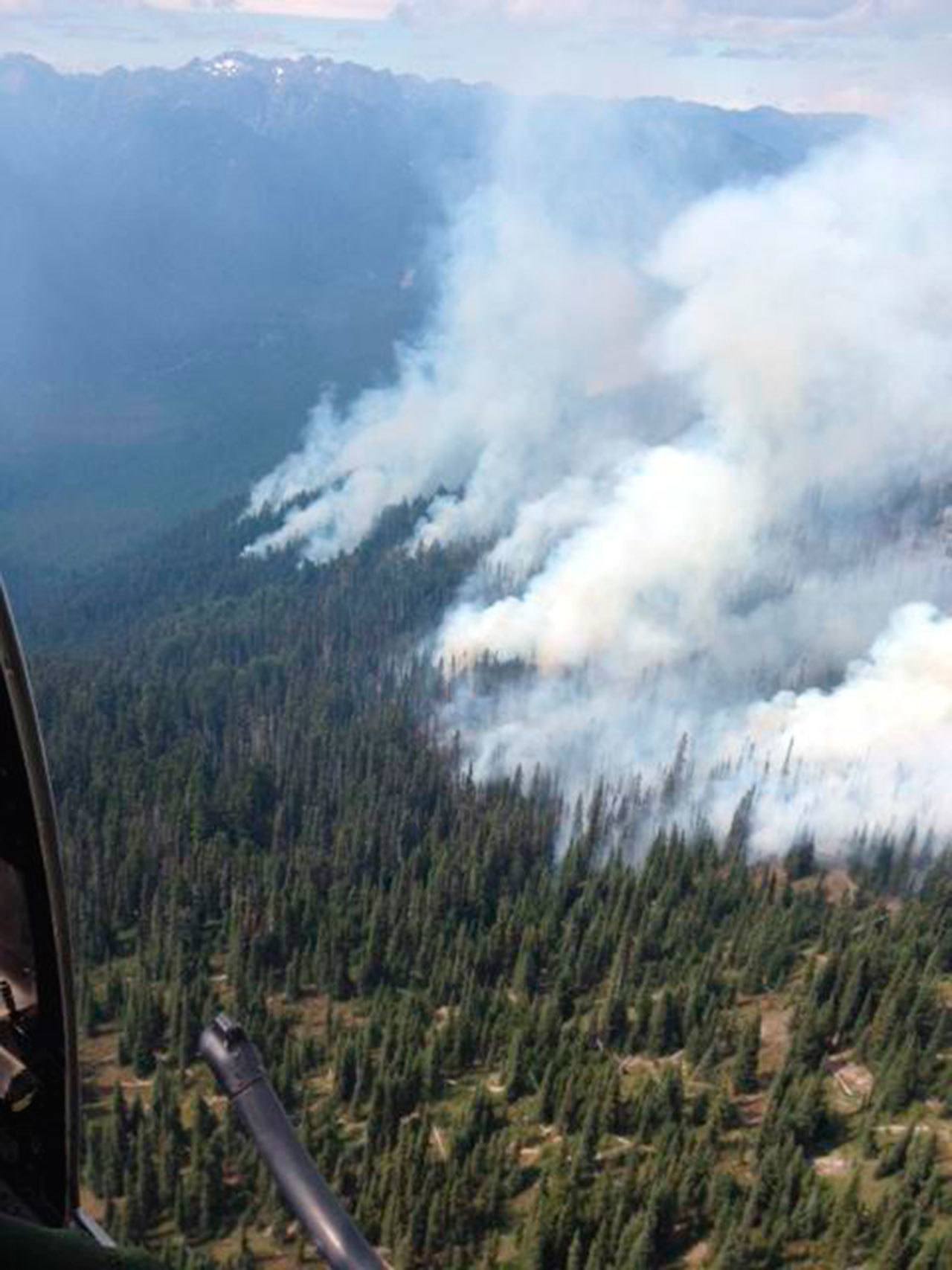Increased fire activity in Olympic National Park forced National Park Service officials to close a section of the popular Elwha River Trail late Monday afternoon and suppress flames a quarter mile from park structures.
Fire officials found the increased fire activity as the Hayes and Godkin wilderness fires experienced moderate growth due to gusty winds Sunday evening, the Park Service said.
Embers blew from the Godkin fire onto vegetation on a river bar of the Elwha River, sparking a 900-square-foot burning patch a quarter mile south of park structures in Wilder Camp.
That prompted fire crews to suppress the flames to prevent it from becoming a bigger threat, Koshare Eagle, fire information officer, said Monday.
She said it was the first active suppression of the 181-acre Godkin fire 25 miles south of Port Angeles along the Elwha River.
The Elwha River Trail was shut down from Chicago Camp at the south end to the Hayes River Station, Eagle said.
Eagle said the section was closed after fire personnel discovered three hot spots, two a tenth-acre each and one 30 feet by 30 feet.
Fisheries biologists were to begin surveying pools in the Elwha River on Monday to identify areas that firefighters can draw water from that will minimize potential impacts to fish, the Park Service said.
The Hayes fire 20 miles south of Port Angeles remained at 718 acres, the Cox Valley Fire 12 miles south of Port Angeles at 56 acres and the Ignar Creek Fire 22 miles northeast of Lake Quinault at a half acre.
The Park Service was solely monitoring those fires.
Water drops have been conducted on the Cox Valley Fire north of Obstruction Point Ridge.
Obstruction Point Road and Hayden Pass Trail from Dose Meadows to the Elwha River Trail remain closed due to safety concerns.
Fire managers observed the Hayes Fire spreading primarily south and east, according to a Park Service press release.
There was little smoke observed from the Cox Valley Fire on Sunday, according to the Park Service.
Equipment and materials are in place to initiate protection for remote park infrastructure such as shelters, wooden footbridges and trail signs, according to the Park Service.

